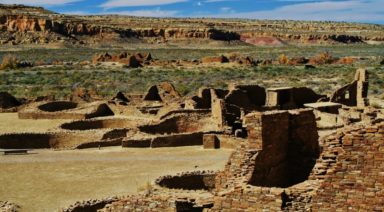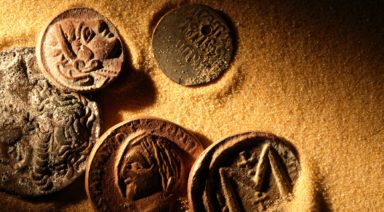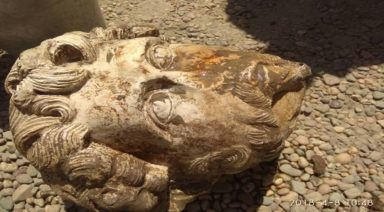Behold The Light of the Goddesses: Ancient Egypt

Ancient Egyptians saw their deities in a way that few other cultures did. In some mythological pantheons, emphasis was placed on male deities. This wasn’t the case in Egypt. In Egyptian religion, there was equality between Gods and Goddesses. Males weren’t more important than females. In fact, the greatest hero of their mythology wasn’t a male, but a childless widow.
It’s important to note that gods were seen as forces of nature, both abstract and concrete, but also as living, thinking entities who took an interest in people’s lives. They interacted with humans and helped those they deemed worthy. Magic was a major part of Egyptian life and the world of the unseen was as tangible as what we call reality. Deities were seen as protectors and guides, unshakeable in their principles. To the ancient Egyptians, gods and goddesses were a current of energetic power that gave structure to the Universe. Each deity was pivotal to reality and without each one, everything would collapse. This meant that goddesses were as respected and beloved as their male counterparts.
The unique way in which Egyptians perceived feminine energy is reflected in the names of some of their goddesses. A good example of this is the lioness-headed goddess, Sekhmet. The word, Sekhem, means power and is linked to strength, vigor and vitality. By adding the feminine suffix to the word, the sound of T, Sekhem becomes Sekhemet, the embodiment of the abstract idea of vital energy. Similarly, the word Ma’a meant truth. Adding the T, the goddess Ma’at became the goddess of truth. She represented honesty and purity of motive and mind. Her symbol was a feather that fluttered at the slightest hint of dishonesty. No secret, deception or evasion of mind could escape her.
Goddesses as Protectors
In general, goddesses were seen as compassionate, intelligent, ever vigilant and perhaps most importantly, protective. Some of the deadliest animals in nature were represented as goddesses. Scorpions, cobras, hippopotami, and lionesses were portrayed as goddesses that protected with swift ferocity. Female deities in ancient Egypt were not to be trifled with. One of the most important duties of any goddess was the protection of women, children and the elderly. A goddess’s form, be it lioness, hippopotamus, or whatever animal was portrayed, indicated the nature of their personality, based upon the observation of their natural habitat and their behavior therein.
You’ve probably seen the vulture and cobra on the headdress of an Egyptian queen or king. These two goddesses were Mut, the vulture, and Nekhbet (or Wadjet, her twin), the cobra. Symbolically, they covered it all, from the heights where vultures ride thermals, to the lowest ground, where serpents lie hidden under rocks or in grasses. Mut and Nekhbet watched and protected royalty, and by extension, the rest of humanity.
Goddesses as Benevolent Guides
Perhaps the most famous of the Egyptian goddesses is Isis. It’s upsetting to me that due to a media friendly acronym, her name has come to be associated with fear, acts of terrible violence, warfare and terror. Nothing could be further from her energy. This is a good time to mention that the name of her husband, Osiris, was a Greek version of his Egyptian name, Ausar. To me, the hieroglyph of his name looks like a throne. This makes sense, as he was the king of the gods, the seat of power. His wife’s name was the feminine version of his. Adding a T would have made her the right to rule realized, implying that she would pass on the lineage and her heir would be king or queen. Her name may have been pronounced Auset, or perhaps even Ast. It seems appropriate that I use Egyptian names, as best as is known, for the rest of this article. After all, they believed that the speaking of these names, even silently in our minds, gave them life and we could certainly use more compassion and benevolent guidance in this world.
Incidentally, in ancient Egypt, women had equal rights of divorce, ownership of property, inheritance, rights in all aspects of marriage and could even practice polygamy, if they could afford it. It doesn’t take much reflection to realize that not everything ancient was primitive.
The Egyptian Pantheon
What follows is a list that is by no means complete, but it includes some popular goddesses of the Egyptian Pantheon. Many of these were prototypes for deities that came after, in other cultures, while others are unique to the Egyptian way of looking at the world. All of them are powerful and magnificent.
Not everyone will agree with the way I spell their names, or describe them. I have my own take and if I get it wrong, I’m guessing the entities involved won’t mind a bit. They’re immensely forgiving.
Auset (Ast or Isis)
Originally, Ausar was a god of agriculture, irrigation, civilization and order. His brother, Set, ruled over the unbridled powers of nature and the harsh realities of the world around us. Set was a strong God, who despised his perceived weakness of Ausar and his civilized ways. Set conspired, with like-minded entities, to murder his brother, which he did, seizing his brother’s throne. Ausar’s wife, Auset, fearing for the Universe and the fate of humanity, defied Set and faced incredible danger in order to resurrect her husband from death and magically conceive a son, Horus, Ausar’s heir.
Eventually, Set and Horus engaged in hand-to-hand combat for the throne. Powerful Horus, the noonday sun, vanquished Set after days of battle and just as Set was about to be slain by Horus’ mace, Auset intervened, rendering the weapon useless. Auset saved her husband’s murderer by demanding that her son show compassion and spare his uncle’s life. That night, they held a banquet and everyone was invited.
Auset is beloved all over the world to this day for good reasons. Her courage, determination and willingness to oppose tyranny is a model for all who seek a better world. Hers is a lesson of magic, strategy, valor, determination, eternal hope, teamwork and most of all, compassion and mercy.
Nebet Het (Nepthys)
Nebet Het means lady of the house. Her husband was Set, the antagonist of the Ausar story. It should be noted that even though grumpy, Set wasn’t considered to be a bad fellow and was revered and worshipped throughout the history of the Egyptian Empire. He wasn’t easy, however, and Nebet Het had her hands full. She was a goddess of the hearth, home and a protector of women and children during childbirth. It seems possible that she was the goddess to appeal to when one had a difficult husband. I view her as patient, wise and understanding. She was strong, as were all goddesses, and disobeyed her husband’s orders in order to help her sister and friend, Auset.
Serqet
Serqet was a scorpion goddess. She was one of the deities that had the ability to cause great pain and even death, or prevent from it. Serqet’s main role was as a protector against poisonous stings, bites, and defilement, even in the afterlife. If Serqet favored a king, he was considered to be unconquerable. Yes, this is where the famous Scorpion Kings came from, although I’m guessing they weren’t nearly as muscular as the fellows in the movies.
Nekhbet/Wadjet
If scorpions don’t intimidate you, how about a cobra? Nekhbet and her twin sister,Wadjet, were cobra goddesses and represented protection from snakebite, as well as from all opponents. Wadjet was also associated with oracles and psychic visions. It’s said that a city in Egypt, called Per Wadjet, was the home of a famous oracle. It certainly would have included deadly snakes as a major part of its cult. Interestingly enough, the Oracle at Delphi was also associated with a serpent, specifically one slain by Apollo. It was said that its carcass rotted in the cave of the oracle, thus creating the vapors that gave the priestess, known as The Pythia, her visions. The snake was known as the Python, a word that may have been derived from the Greek word Pythein, meaning to rot. The similarity between these two powerful oracles may be connected, or simply coincidental, although I doubt it. Snakes have no eyelids and always seem to see, even when they sleep. Now that’s certainly something to ponder.
Nut
Nut is the feminine aspect of another deity, Nu. Nu was the swirling, chaotic blackness of space. Nut was that chaos organized and made actual. She was the container for the stars and planets. She stretches over us, her fingertips and toes touching the earth. Of course, she’s a protector goddess, mainly of our ancestors, who were said to live within her vast body and light lanterns each night, giving us a way to navigate, understand the seasons and predict the Nile inundation. In her own way, she protects passively, but powerfully.
Mut
Mut was the vulture goddess. Her name means, “Mother,” and the vulture was a symbol of maternal duties. I wondered about this for years, then realized that the image of a caring, loving figure overhead, watching and removing the carrion from our path, was comforting. My mom made me a robe once. She had my dad paint an ancient Egyptian motif on the back, one that had caught her eye, although she didn’t know why. It was the vulture, Mut.
Tauret
Tauret was the hippopotamus goddess. Hippos are amongst the most dangerous animals in the world. They’re ferociously territorial and lethal in their attacks, especially when they have offspring. Tauret protected women, oversaw childbirth and health and was prayed to for safety in trips by water.
Hat-Hor (Hathor, Het Heru)
Hat-Hor means, “House of Horus.” This could refer to the sky, or it may imply that she was the keeper of a place where the sun, Horus, was safe and could be revived after his journey of the day. Isn’t that what a good relationship should be, safe and rejuvenating? She was portrayed as having a cow’s head, or having horns on a human head. She was beautiful and a deity of love, beauty and sensuality. She is sometimes compared to the Roman Goddess, Venus.
Sekhmet
Portrayed as a lioness, Sekhemet was vital to men and women alike. Her attributes were fidelity, power, sexuality, ferocity in battle, nurturing, success in hunting and family fidelity, in addition to other powerful attributes. To offend Sekhmet, or one of her pride, was to invite disaster. I stood in front of an ancient statue of Sekhmet for quite a while, some years ago. To say it influenced me is an understatement. I highly suggest it, if you get the chance.
Neit (Nit, Neith)
Holding a shield and arrows, Neit was a goddess of hunting, warfare, weaving, and skill in weaponry and fighting. She may have been the inspiration for Artemis, Athena and Diana. An extremely ancient goddess, she was sometimes portrayed as nursing a crocodile. Obviously, she was no one to mess with.
Ma’at
After death, Anubis led a “candidate” before 42 judges (sometimes more). The deceased’s heart was then placed on a scale, opposite a feather, the symbol of truth. Ma’at sat at the top of the scale, a feather in her headband. As questions were asked, only one thing was demanded, truth. If the feather vibrated, the weight of the heart dipped the scale and admission into eternity was forfeited. Ma’at wasn’t just a goddess of truth, but also of the ability to admit our actions and shun self delusion, a concept far ahead of its time.
There are more goddesses, but alas, I must wrap it up. I’ll leave you with one last thought: embrace the feminine, or be doomed to a life without it.
I wish you all, peace and love.
11 New Hills Discovered at Gobekli Tepe Megalithic Site

Turkey just made an announcement about a major archeological discovery at Gobekli Tepe. Could this finally shed light on who built the world’s oldest megalithic site, and why?
First unearthed in 1995, the 11,000-year-old excavation site at Gobekli Tepe has yielded the most significant collection of stone pillar monoliths ever discovered. While most archeologists agree that the structure is the world’s oldest temple, they have long-debated the origins and motivations of its builders. The recent findings of 11, possibly 12, new sites around Gobkeli Tepe may provide those answers.
Andrew Collins is an ancient history researcher who has written extensively about the site.
“Gobekli Tepe is in many ways the best evidence that we have of a lost civilization—a pre-Ice Age civilization that existed worldwide and was probably wiped out by very harsh conditions and possibly some kind of comet impact about 13,000 years ago, and that the sole remnants of this went on to create Gobekli Tepe,” Collins said.




































